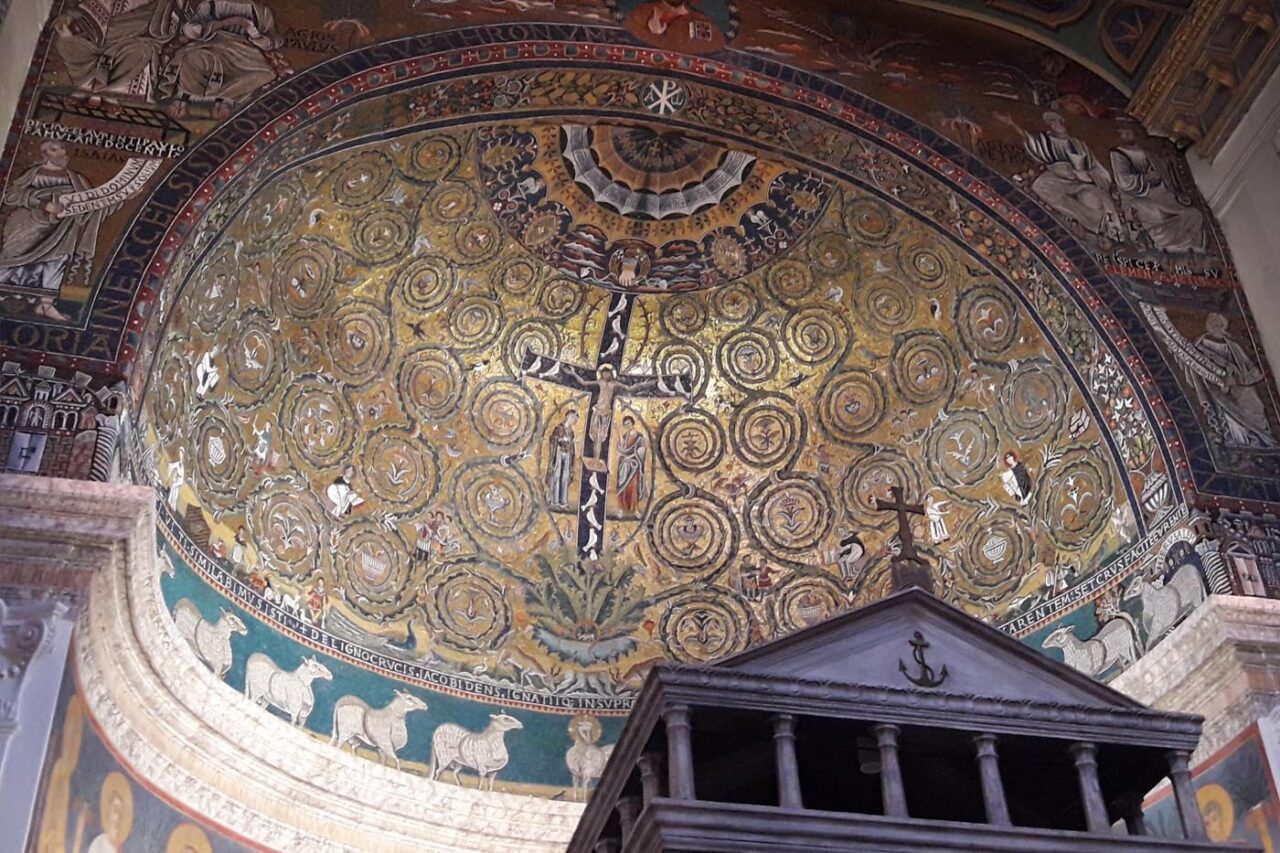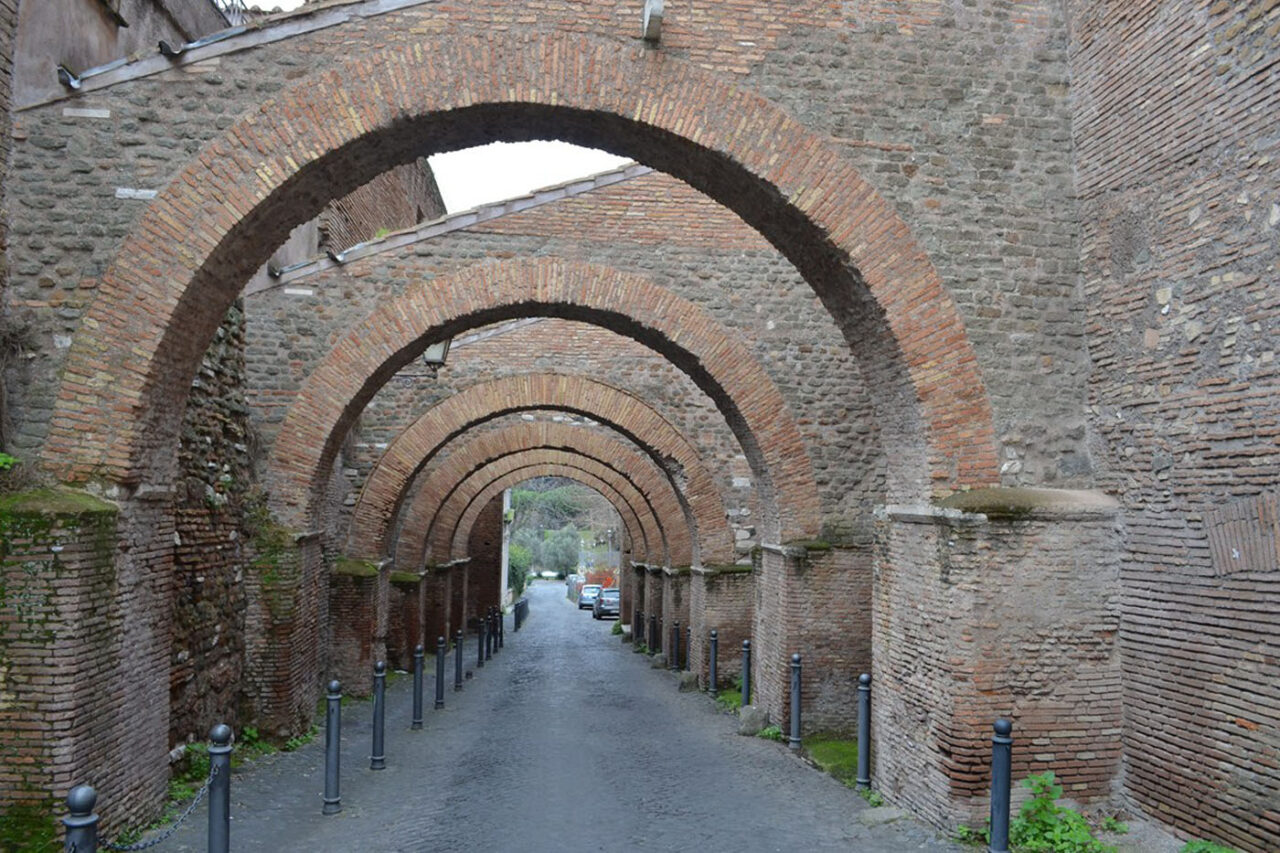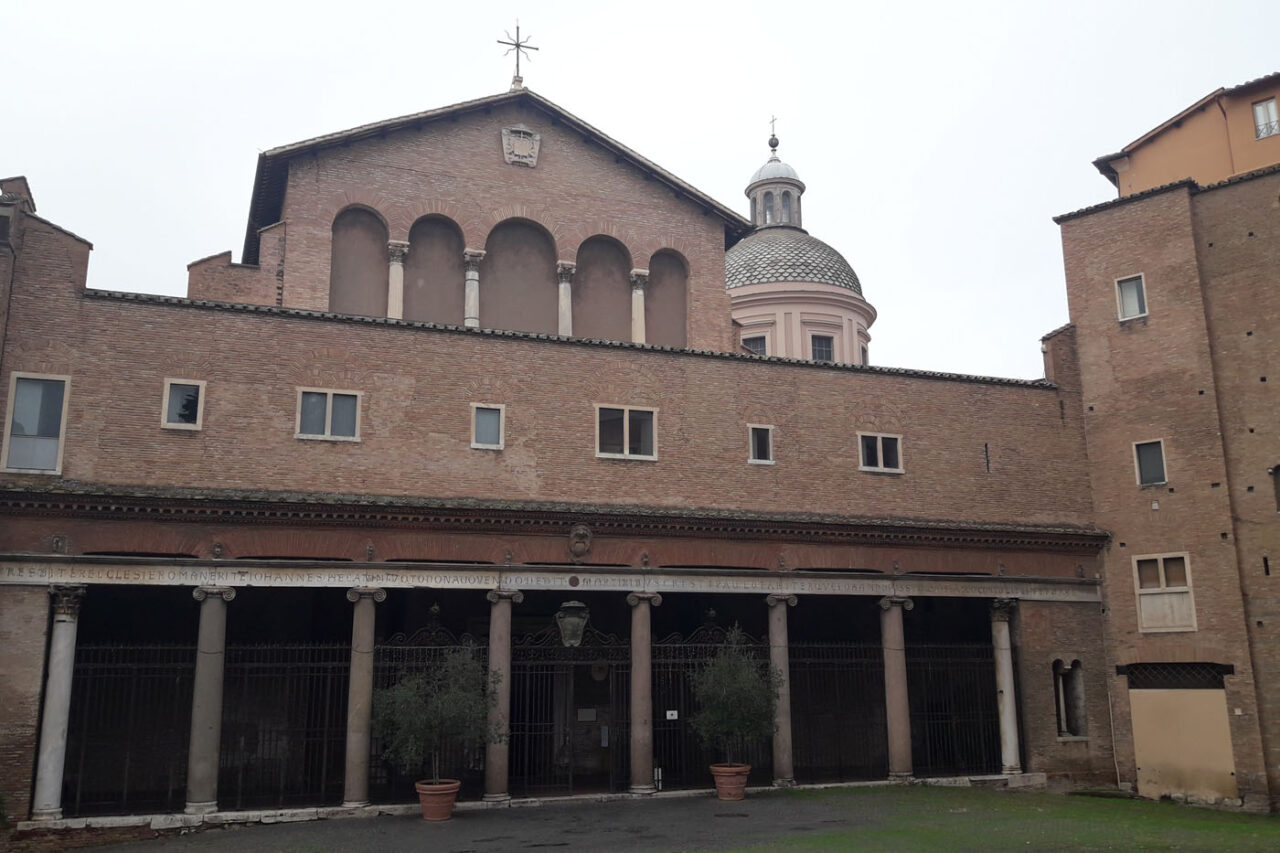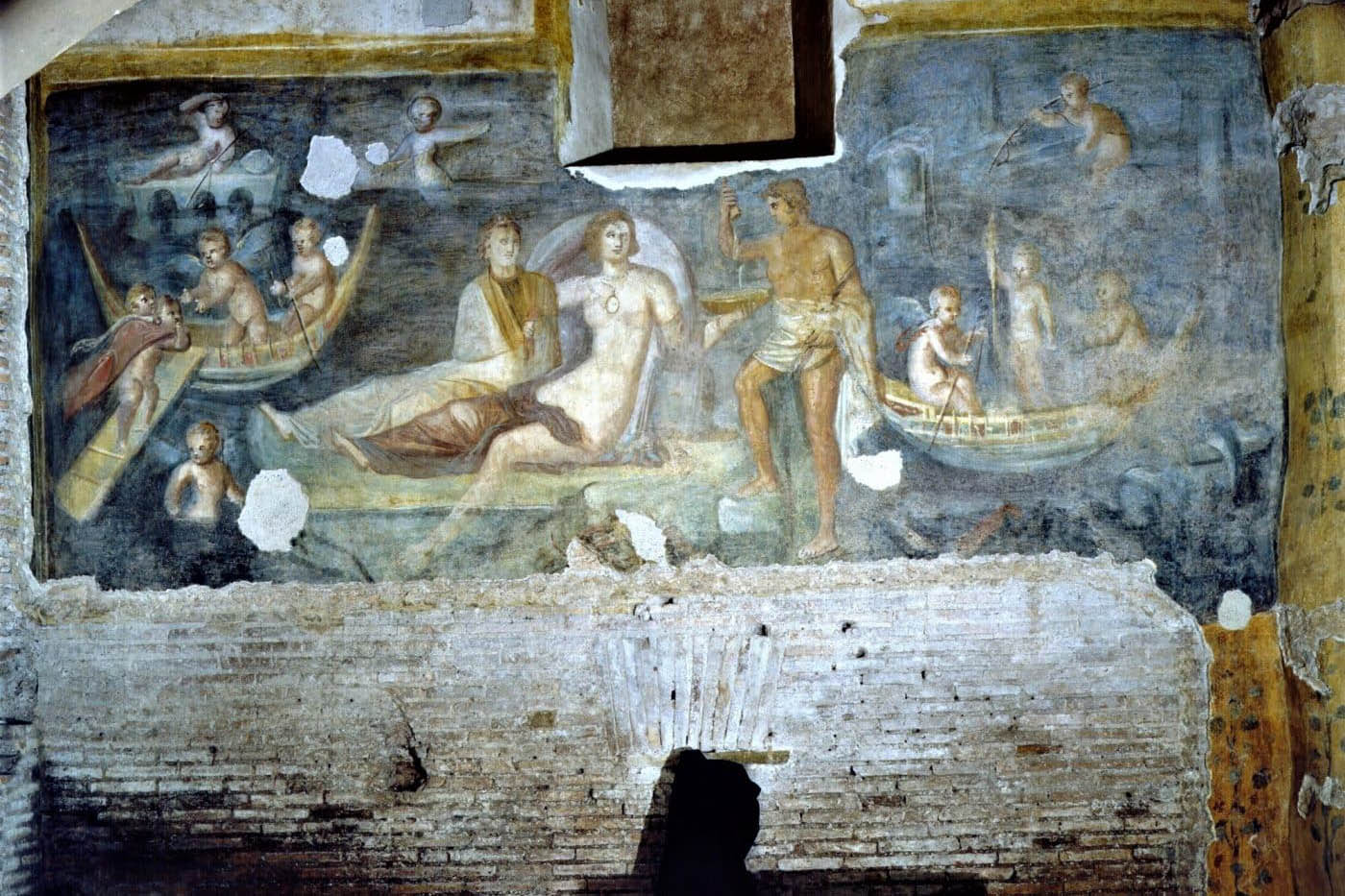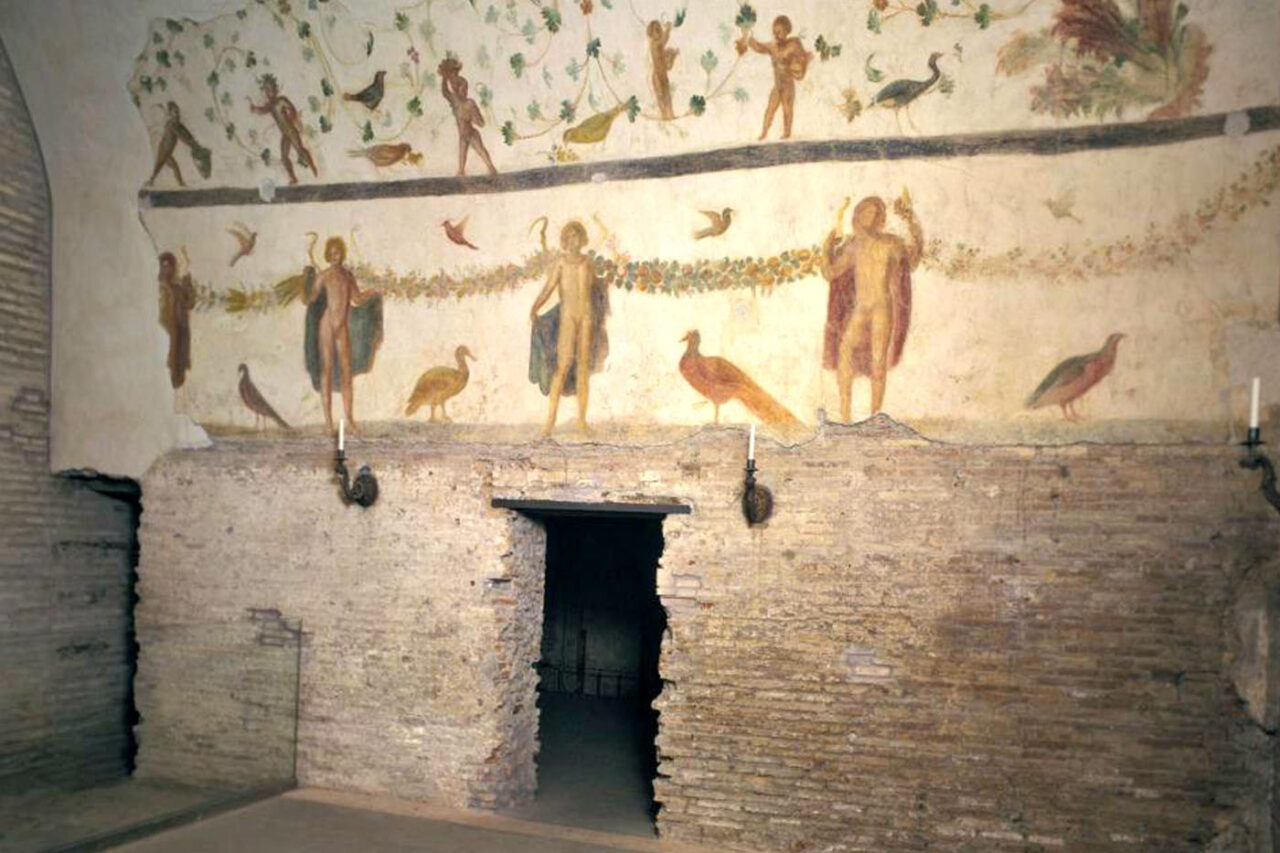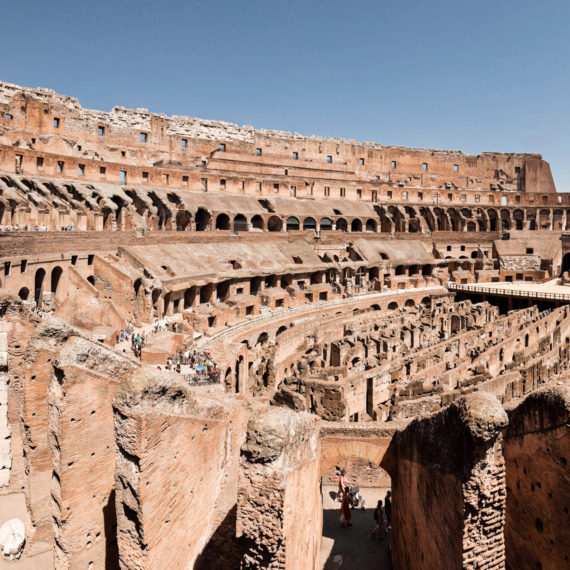Rome Underground Tour
Step off the beaten path and explore the hidden wonders of Rome with our exclusive Rome underground tour. This tour takes you on a thrilling journey through the hidden buildings that lie beneath the city’s bustling streets.
Discover the secrets of ancient Rome as you descend beneath the busy streets of Rome to visit the underground levels of the Church of San Clemente and the ancient Roman apartment buildings under the Church of Saints John and Paul (Case romane del Celio).
Church of San Clemente with its underground levels
The Church of San Clemente (or Basilica of San Clemente) is one of the most stunning medieval churches in Rome with its exquisite mosaics and paintings. Incredibly, it hides 2 more levels underneath its magnificent marble floor. Beneath the “modern” 12th-century church, you’re going to discover the first church (4th century CE) abandoned for mysterious reasons at the end of the 11th century.
One layer further into the earth are the remnants of a 1st-century AD Roman building and a temple dedicated to the god Mithras, the bull-slayer. The cult of the sun god Mithras was widely spread across the Graeco-Roman world but it was a ‘mystery cult’, meaning that only the initiates knew exactly what happened in the temple.
Ancient Roman Houses under the Church of Saints John and Paul (Case del Celio)
After a 15-minute walk, we will reach the Church of Saints John and Paul. According to tradition, John and Paul were Christian martyrs who died in the mid-4th century AD because they refused to worship the pagan gods.
The medieval church that bears their name sits on the site of previous Roman constructions: an apartment building with shops facing the ancient street and an ancient Roman villa. This complex of underground Roman houses at some point was probably used by a community of early Christians before Christianity was declared State religion in 395 CE. We will see the incredible paintings in some of these rooms from both phases of life of the houses (pagan and Christian).
This Underground Rome tour is perfect for those who want to experience the city in a unique and unforgettable way, away from the crowds and the typical tourist destinations.
For more info on the locations, you may check out the official websites:
http://www.basilicasanclemente.com/en/


